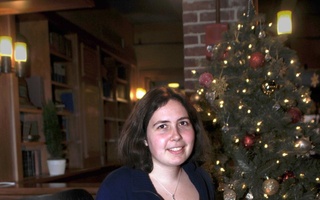Innovation is the watchword for Harvard as it begins to unveil and bring to life its vision for education at a time when the classroom, the centuries-old center of learning, is in upheaval.
An ongoing capital campaign—launched this fall and set to break global fundraising records—offers Harvard’s flagship school the opportunity to modernize its approach to one of its core missions of teaching and learning amid the rise of virtual education and challenges to conventional classroom practices.
With an emphasis on innovation and technology, the Faculty of Arts and Sciences, home of Harvard College, is funneling $150 million toward a priority titled “Leading in Learning.” If brought to fruition, the school’s vision could transform not only the way members of the Harvard community teach and learn, but also the physical spaces they inhabit.
But while campaign showrunners have shared their plans to inject funds into three key areas—the Derek Bok Center for Teaching and Learning, Harvard’s branch of the online learning platform edX, and the expansion of classroom infrastructure—much about the direction of their vision remains unclear.
Seeking to learn about learning, and ultimately, lead in the increasingly crowded and progressive landscape of higher education, Harvard is planning its vision of the liberal arts in the 21st century. Yet some faculty members question what “innovation” really means, where it will lead FAS, and to what extent these changes will enhance education at a centuries-old institution.
DISRUPTION IN LEARNING
To take center stage in the rapidly evolving field of higher education, Harvard has zeroed in on technology and innovation as a means of diversifying models of learning while carrying on its liberal arts tradition.
{shortcode-66e50c6f1c1b98daee2dc7eed7a70aa3cca51548}
The “Leading in Learning” priority represents 6 percent of the FAS’s total $2.5 billion campaign goal. While the school’s other priorities will bolster and expand existing faculty programs, financial aid, and renewal of the undergraduate houses, the “Leading in Learning” initiative, as reflected in its title, is one of Harvard’s most direct attempts to respond to new challenges to its traditional model of education.
“At this moment of disruption and change, Harvard will shape the future of education,” reads a 30-page booklet distributed at the campaign’s launch last October mapping out the school’s vision for the initiative.
With the increasing presence of education-oriented digital technology in the form of online classes, virtual learning applications, and data analysis methods, Harvard is presented with many opportunities to transform education.
At the same time, while many consider other top-rated schools—namely Stanford and other members of the Ivy League—the main challengers to Harvard’s position as the world’s foremost academic institution, it is smaller liberal arts colleges that are pushing the boundaries of teaching and learning, FAS administrators and faculty members say.
“It is true that our challenge is to compete not only with the Stanfords and Yales and Princetons as research universities,” says History and Business School professor and former FAS Dean William C. Kirby. “But also, we hope, to offer students the kind of education that you can also get at Williams, and Amherst, at Carleton and at Oberlin.”
Kirby says he believes students at these colleges are inspired with a sense of excitement about academics that leads more of them, proportionately, to go on to graduate education at the doctoral level than their counterparts at large research universities.
Read more in Faculty News
Women, Minority Faculty Members Report Worse Climate Than Men, Non-MinoritiesRecommended Articles
-
 P. Kenzie Bok
P. Kenzie Bok -
FAS Focuses on Teaching and Learning InitiativeWith a stronger financial outlook for FAS, Dean Michael D. Smith says he can now focus on promoting his “teaching and learning” initiative.
-
Bok Center Equips TFs With Classroom ToolsFor undergraduate students, the role of the teaching fellow is an important fixture of their pedagogy. And for graduate students, teaching in a classroom is a central component of their own curriculum.
-
 Giving Out Free Money Is a Crime?
Giving Out Free Money Is a Crime? -
Lue Named First Faculty Director of the Bok CenterBiology professor of practice Robert A. Lue was named the first Faculty Director of the Derek Bok Center for Teaching and Learning Thursday, a sign of the Faculty of Arts and Sciences’ increased emphasis on innovative teaching, both in person and online.
-
The Harvard Foundation Adjusts to a Diversified CommunityIn the past three decades, as the Harvard community has diversified, the Foundation has stepped up its role in supporting the activities and collaboration of student organizations, transforming the way that it influences cultural dialogue on campus.













